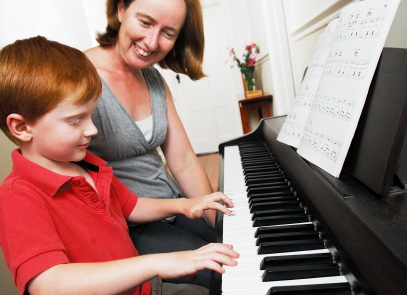Login form
Music in the English Classroom
 Helene Jarmol Uchida
Helene Jarmol Uchida
April 2003
Since I have been a music lover all my life, it is only natural for me to bring English songs into the EFL classroom. I believe music fills a room up with warmth as strong as rays of sunshine filtering through a window.
Music is a strong resource which helps create positive feelings about English. While songs serve as useful teaching tools for EFL students, they also contribute to helping create a positive and warm atmosphere in the English learning environment. Some successful ways I have used music in the classroom are as follows:
Play English songs as background music as elementary, junior high and high school students enter the classroom. The music being played sets the tone for the class, signaling to the students that they are entering your "domain" (a foreign one), that it is going to be enjoyable (since music usually symbolizes pleasure), and that the initial exposure to English is passive, an easy non-threatening transition from the Japanese-speaking world to the English-speaking one.
Decide on an English Class theme song that reflects YOU and your school. If you are from Australia, it might be "Waltzing Matilda." If you are from England, it might be "London Bridge." If you are Japanese, it might be a song from your favorite country. The point is that the song is your school theme song, and whenever students hear it, they think of you and your school. It can be played at the beginning and at the end of preschool classes, at "happyokais," on your school answering machine. It gives students a strong sense of attachment and identification with you, your class, their classmates and English in general.
Song activities for preschool and elementary school students are always positive events. The students sing along, imitating the body actions, finger plays and dance steps initiated by the teacher. They experience the songs as "doing activities," just as young children all over the world do naturally in their own culture and language with no explanations necessary .
Song dictation exercises are challenging and enjoyable for most high school, university and adult students. The teacher dictates a popular song like "Imagine" slowly two times. Then the lyrics are passed out to the students who self-correct their dictation. As a pronunciation exercise the teacher recites the lyrics slowly as the students repeat. The song is played on the CD once. By the time the teacher plays the song, the students are usually singing along. With advanced classes the meaning of the lyrics can be discussed.
I believe musical support to be a valuable resource that teachers can depend on to help teach language and share culture at the same time. Next to a smile, music is the best vehicle to help people reach out and touch. I myself have had countless moving experiences in the classroom because of the camaraderie and interaction English songs have initiated and orchestrated. I highly recommend you consider bringing some rays of music sunshine into your classroom.

